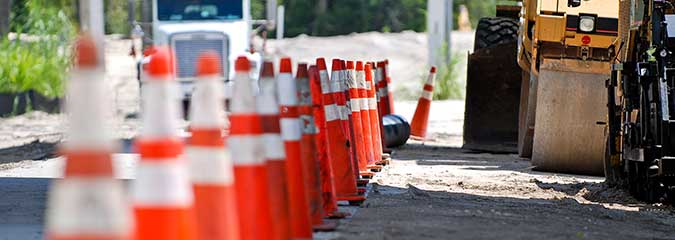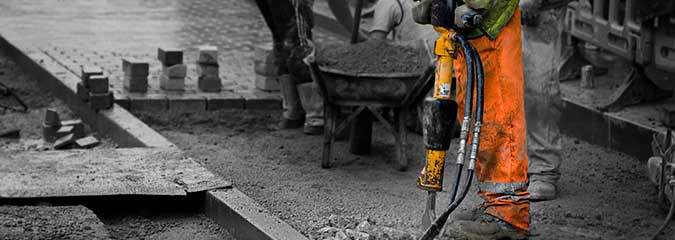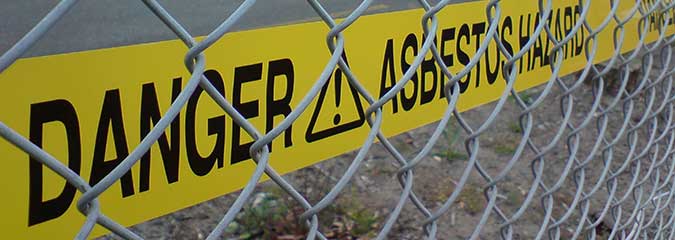
Accidents at Work
When you go out to work you have every right to expect two simple things. The first is that you’ll be fairly rewarded for your efforts and the second is that you’ll be working in an environment which allows you to remain free from injury and illness. Your employer has a duty to maintain such an environment, whether that means providing safety equipment, ensuring you’ve received adequate training or simply maintaining any tools required in reasonable working condition. If an employer fails to take any of these steps and you are injured as a result of this negligence, or develop an illness, then you have every right to pursue a claim for compensation.
This duty of care isn’t simply a convention or tradition, it is a legal obligation, enshrined in the Health and Safety at Work etc. Act 1974 and any employer breaking the law by failing to meet the duties set out in the Act is letting their employees down badly. Amidst the plethora of publicity around the issue of Health and Safety, the vast majority of which tends to be negative in tone, it’s all too easy to forget that there was a time when workers were looked upon as expendable, and their safety regarded as pretty much a non-issue. That this situation has changed and improved is thanks, in no small part, to the fact that workers can claim compensation for illness or injury caused by their work. The range of situations which can lead to a claim of this kind is huge, running from relatively minor accidents with faulty equipment to serious injuries, or even life threatening conditions.
Many people hesitate to pursue claims of this kind because of reluctance to take money from their boss and, by extension, their workmates, but such worries are unfounded. By law, your employer has to take out insurance against such claims and it is this insurance which will fund any compensation you might be rewarded.
Similarly, it is illegal for a worker to be sacked or in any way penalised because they have chosen to seek compensation, and any sensible employer will know that the consequences of taking this kind of action will probably be worse than any compensation claim.
Statistics collected by the Health and Safety Executive indicate the scale of the problem of work related injuries:
- Figures collated during 2013/2014 showed that 1.2 million people were suffering from a work related illness.
- During 2012, 2535 people died from mesothelioma caused by past exposure to asbestos.
- 28.2 million working days were lost as a result of illness or injury of a work-related manner.
- 113 people were actually killed whilst at work, with another 20,000 receiving a specific and major injury.
These figures, available at http://www.hse.gov.uk/statistics/at-a-glance.pdf, barely scratch the surface of this problem, and yet demonstrate the scale and range of injury in the workplace. Creating a sensible and robust compensation system, rather than fuelling frivolous claims, will actually go some way towards making workplaces in general safer places, by encouraging employers to take every step necessary to ensure their employees’ health and well-being. Whilst there are countless ways in which people can become injured through work, the principles of every case are the same:
1) You need to have suffered an illness or injury.
2) This needs to have happened as a result of negligence on your employers’ part.
The particular type of injury involved can range from RSI (Repetitive Strain Injury) caused by an unsuitable work station, through broken bones resulting from a trip or fall all the way up to a serious or even fatal condition which doesn’t manifest itself until many years after you’ve actually stopped working. In the case of most injuries, there is a time limit of three years after which a case can no longer be launched, although in the case of work related illnesses, this period runs from the date upon which the link between your workplace and the condition becomes apparent. In the case of all compensation claims, the more information you can bring to the people building your claim, the better, which means collecting evidence in the form of:
- Any entry in your workplace accident book.
- The accounts of any eyewitnesses to the incident.
- Any CCTV footage of the incident – your employer (along with any other owner of a CCTV system) is legally obliged to provide such footage within 40 days of receiving a request, although some parties may opt to charge £10 for doing so (www.gov.uk/request-cctv-footage-of-yourself).
- The records of any medical appointments resulting from the accident.
- Pictorial evidence of the circumstances of the accident (i.e. the condition of your working equipment) if you’re able to take photographs immediately.
- Receipts relating to any expenses arising from the accident, such as travel costs, medical bills and lost wages. Any compensation you receive will be calculated using a combination of the type and severity of your injury and an amount to cover directly related expenses, both in the immediate aftermath and moving forward.
As stated, the phrase ‘injury at work’ covers a broad range of incidents, but amongst the most common types of claim we deal with are listed below.

Back Injuries
Disorders of the lower back are amongst the most prevalent suffered by workers in the UK. According to the Labour Force Survey, the number of people reporting work related injuries of the back in 2013/14 was 228,000. Certain industries and occupations are more prone to this type of injury than others, with those which are most likely to have workers effected being Construction, Human Health and Residential Care and Agricultural and related industries. In short, any kind of manual work runs the risk of causing injury to the lower back if the correct care is not taken, and your employer has a legal obligation under both general Health and Safety legislation as well as, specifically, the Manual Handling Operations Regulations 1992 (MHOR), to ensure that you are protected from such injury.
Your employer has a duty of care to avoid manual handling as far as possible, and to ensure that any manual handling which has to take place does so with the risk of injury minimised. An amended version of the MHOR was published in 1994, and includes advice on how to avoid risking injury through lifting, pushing or pulling activities. In short, your employer should take all reasonable steps to minimise such risk, and should revise the task being undertaken if you report discomfort. If you took all reasonable steps to attempt to avoid such an injury, but are suffering because your employer didn’t show the same duty of care, you may well have the right to claim for compensation.
Although ‘a bad back’ is sometimes treated as a minor complaint, it can lead to severe pain, diminished mobility and, especially when chronic in nature, anxiety and depression. In such circumstances, your life will have been impacted to a degree which clearly calls out for the justice of fair compensation.

Falls from Height
Whilst any job, even something as seemingly ‘safe’ as working at a desk, can lead to injury or illness, there are clearly certain situations which are more dangerous than most, and one of the most obvious is working at height, whether that means on a raised area such as a roof, up a ladder or on scaffolding. It’s obvious that any failure to adhere to the correct safety measures is going to have an amplified effect if the worker involved is sent falling a greater distance than the average slip or fall. This simple principle has been enshrined in the law, via the Working at Height Regulations of 2005. These regulations set out a checklist which it is the duty of your employer to adhere to in an effort to make working at height as safe as possible. The checklist includes a thorough assessment of the circumstances of the job, a plan to ensure it is as safe as possible and adequate supervision of the employee.
Similarly, the risk of working of scaffolding was recognised by the Health and Safety Executive which, as part of the Working at Height Regulations, set out a scaffolding specific checklist covering factors such as when and where to use scaffolding and how to liaise with a qualified contractor in order to ensure that any scaffolding erected is of sufficient strength and stability.
If your employer asks you to work at height then they are asking you to put yourself at risk. Whilst it is partly your own responsibility to ensure that this risk is minimised wherever possible, this is something which can only be achieved if your employer also takes all reasonable steps. If they fail to do so then they are putting your health, fitness and physical wellbeing at risk, meaning you deserve to be compensated.

Assault at Work
At first glance, an assault which takes place in the workplace might seem to be similar to one which occurs anywhere else, and is thus more suited to a claim for Criminal Injuries Compensation than workplace compensation. Whilst this may be true in those cases wherein an assault was impossible to predict and could not have been avoided, there are circumstances in which your employers’ failure in their duty of care might be a contributory factor.
You may, for example have been placed in the position of dealing with a potentially violent situation (i.e. working as a security guard or caring for people prone to violent outbursts) without sufficient fellow members of staff to offer support and protection. Alternatively, you might have been provided with inadequate training or safety equipment, or the assault could be the action of someone who has acted violently or threateningly in the past.
In all of these circumstances, or any in which the assault could have been prevented through proper care, foresight and attention, your employer has a legal duty to keep you as safe as is reasonably possible, and as such may well be guilty of negligence. Even in a job which naturally brings a degree of personal danger – Police Officer for example – it’s only reasonable for you to expect this risk to be reduced to the minimum possible.

Forklift Accidents
The Fork Lift Truck Association (FLTA) is a professional body aiming to make the use of fork lift trucks as efficient and effective as possible. Another main aim of their work, however, is to ensure that people working with, or around, fork lift trucks, such as those helping to distribute goods around a warehouse, are kept as safe as possible.
There’s no escaping the fact that a fork lift truck is a dangerous piece of equipment, and the figures collated by the FLTA merely confirm just how dangerous. According to statistics gathered via the Health and Safety Executive, a person is likely to be killed at work thanks to a fork lift truck every six weeks. On top of this shocking statistic, an average of 43 people per week will be injured by fork lift trucks, and two thirds of those who end up being hospitalised in this manner will actually have been on foot at the time of the incident. If you’ve been injured in this manner and feel that the incident occurred thanks to inadequate training, supervision or upkeep of equipment, then the employer ultimate responsible for such matters may well be to blame, and there’s every chance they’ll have to pay you compensation.

Hearing Loss
The typical scenario most people imagine when considering workplace compensation is that of a sudden catastrophic failing or event leading to an accident and injury. The truth of the matter, however, is that many such claims are the result of poor, noisy working conditions which existed decades ago and which result in problems such as hearing loss becoming apparent many years later. In cases such as this, the three year time limit for making a claim only runs from the date upon which the problem, and its’ link to your workplace, becomes apparent.
Establishing hearing loss or tinnitus – a condition in which the patient is plagued by constant noises such as humming or buzzing in their ears – is usually a matter of speaking to a medical expert, but demonstrating that the condition was caused by a negligent employer will require gathering evidence, particularly if the case dates back many years, and this is where the requirement for expert help comes in. The HSE sets out specific legal duties in regard to protecting the hearing of employees, covering factors such as maximum decibel levels, adequate break times, suitable training and protective equipment
If your employer failed or is failing to meet these standards, then they may be responsible for the much diminished quality of life you are now experiencing.

Vibration White Finger
Vibration White Finger is a condition which affects the blood supply to the fingers, causing pain, numbness and a loss of strength and gripping ability. It is associated with the use of hand held or guided power tools such as chainsaws, grinders, concrete breakers and hedge trimmers. Although the use of these tools is unavoidable in certain industries, it is the duty of your employer to seek to minimise the vibration to which you are exposed. Steps which they are obliged to obligated to take, according to the Control of Vibration at Work Regulations 2005 include maintaining any equipment in a manner which reduces vibration, utilising methods which reduce or eliminate the exposure to vibration, arranging a work schedule which ensures that any such exposure is infrequent and interspersed with regular breaks, and providing clothing such as gloves which will keep the hands warm, thus improving circulation and reducing the risk of vibration damage.
If your employer fails to take steps such as these then they have been negligent and left you vulnerable to a condition which causes pain, cannot be corrected and will affect both your social life and ability to earn a living. This is why you would have every right to pursue a claim for compensation.

Other Work Related Illnesses
There simply isn’t room here to consider all of the work related illnesses which might form the basis of a successful compensation claim. According to the HSE, for example, approximately 13,000 deaths each year are estimated to have been caused by lung disease brought about by exposure to dangerous chemical and dust in the workplace whilst, according to the labour force Survey (LFS) there are currently an estimated 10,000 cases of lung or breathing problems every year, caused or exacerbated by work which people are still involved in or only recently stopped doing.
Another common cause of pain and distress is Repetitive Strain Injury (RSI), a condition of the upper body and arms which presents in the form of symptoms such as pain, stiffness, numbness and cramp, and which can be caused by repeatedly performing the same, usually small, movement – i.e. inputting data into a computer. The problem can be exacerbated by a poorly set up work station, cold conditions, lack of rest periods and stress, so it yet another example of a painful and debilitating condition which can be prevented by due care and attention on the part of your employer.

The Claims Portal
Since 2010, claims for injury in the workplace which are covered by employer liability and have a value of £25,000 or less have to be processed through the Claims Portal, an online electronic interface set up by the Ministry of Justice. The portal will allow your representative to input all of the details of your case in a manner which is quick, efficient and secure. By speeding up communications and the sharing of information, it is hoped that the portal will deal with uncontested claims much more quickly than the Court system, thus saving the claimant time and money. Whilst an employer may at first deny any liability, the prospect of having to contest a clear cut case will often lead to an offer to settle, and will have the added plus point of helping to cultivate and encourage safer working conditions in the future.
Although all cases are processed on a no win no fee basis, some costs could be payable under certain circumstances. Any costs would be fully explained upfront by your solicitor before you decide to proceed with your claim. Termination fees may apply based on time spent on your case, or in situations such as: lack of cooperation, deliberately misleading your solicitor, failing to attend scheduled medical or expert examinations, or not appearing at a required court hearing.
By submitting your details into the contact forms provided, you agree to be contacted by National Accident Helpline (a brand of National Accident Law, a firm of personal injury solicitors regulated by the Solicitors Regulation Authority) to discuss your claim.
NoWinNoFee.org is a trading name of Colour Ventures Ltd. Colour Ventures Ltd is regulated by the Financial Conduct Authority in respect of regulated claims management activities. Registration is recorded on the website https://register.fca.org.uk
Colour Ventures Ltd registered office address: Flannigan Edmonds Bannon, Linenhall Exchange, 1st Floor, 26 Linenhall Street, Belfast, BT2 8BG. Company registration number: NI070913



